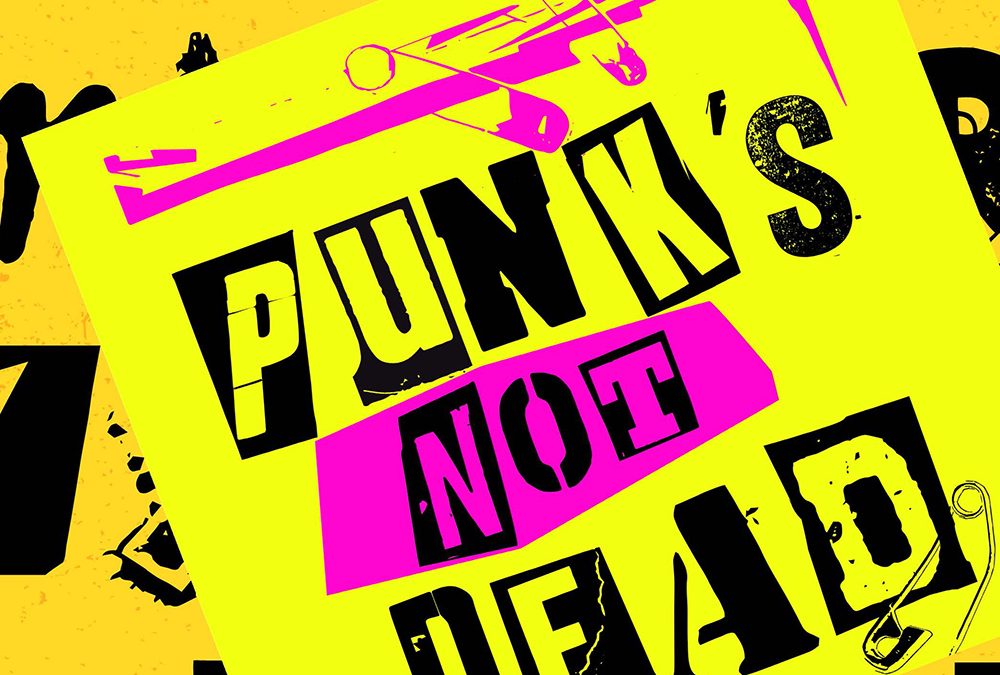Punk emerged as a subculture in a variety of locations around the globe in the late 1960s. Inluded was a wide variety of ideologies, fashions, and other expressions in the punk subculture, such as visual arts, dances, literature, and films. However, punk music was characterized by anti-establishment outlooks, anti-corporate greed, and aggressive, loud music.
Music
Typically, punk rock bands had two electric guitarists, a bassist, a drummer, and a vocalist. Occasionally, the musicians provided backup vocals, usually chants, choruses, or non-melodic slogans. Because of the great significance and overwhelming popularity of the punk rock band The Sex Pistols, this style is most often associated with Great Britain. But there is a strong lineage of pioneer Punk performers from the United States: The Velvet Underground to Patty Smith to The Stooges and The Ramones.
Non-conformist ideologies
Punk rock emerged mainly from underground subcultures championed by artists, musicians, reporters, and other bohemian enthusiasts. Punk stands for “thug” in its literal sense. Indeed, this is very much in line with punk’s rebel ideology — both its politics and practices are heavily influenced by anarchism.
The tenets of punk include being true to oneself, a do it yourself (DIY) approach, and anti-capitalist. There are many branches of this subculture, including Horror Punk, Queercore, and Riot Grrrl.
Magazines and art
If you lived in punk’s golden age, you would likely encounter more than one of the artistic manifestations of the subculture, from magazines to album art and graffiti.
Deskilling in design or democratizing the design tools by introducing computers in the late 1980s is a well-known phenomenon. The process, however, began well before computer technology went mainstream when punk’s artistic ethos permeated the culture of design in the 1970s. As a result, graphic designers started disregarding the rules, and new ones never learned what those rules were.
The culture at that time was permissive. As a member of the culture and as the maker of the culture, you would shape it however you chose. In addition to album covers and flyers, punk zines were adorned with punk artwork.
Hard truths
Punk art is typically straightforward and clear, often expressing political concerns such as social injustices and economic disparities. A common technique borrowed from punk and used in the TV and film industry is to show suffering to shock and appeal to the viewer’s empathy. On the other hand, punk artwork may contain images that show greed, foolishness, or apathy to provoke contempt from its viewers.
Collage
The earliest artworks were black and white since they were distributed in posters and zines, photocopied at work, and copy shops. Crass, influenced by punk, helped revive stencil art. The Situationists influenced Jamie Reid’s art creations for the Sex Pistols and the movies Blonde Fist. As exemplified by artists like Crass Jamie Reid, Dead Kennedys, The Clash, and Winston Smith, punk art often incorporates collage. Cartoonist John Holmstrom created cartoons for Ramones and other
Punk stars
The punk movement itself lasted a short time. However, its ethos and visual strategy have been established in many genres that descended from it, including post-punk, house, ska, and goth. Today, rule-breaking is the norm in design, and DIY genius is sacrosanct. These influences can be seen in things like the maker movement and renewed interest in new wave design.






